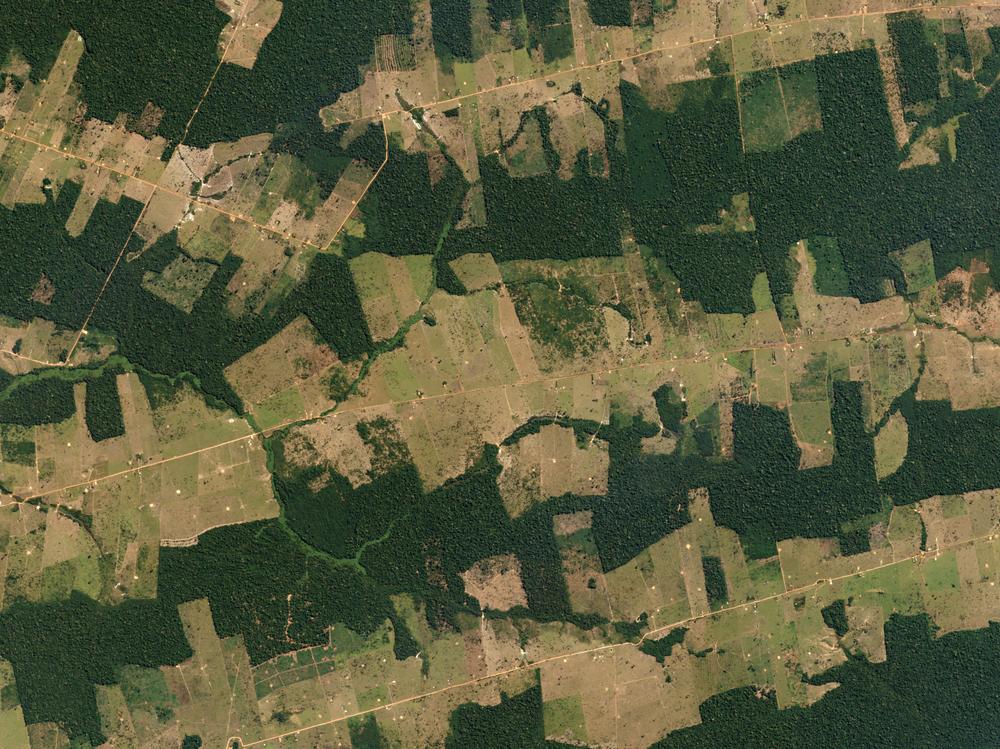Disentangling the geometric and demographic effects of habitat fragmentation on biodiversity across spatial scales
Fragmented forest, Brazil
Image Credit: Planet Labs, Inc., Forest and Fields, Rondônia, Brazil by Planet Labs, CC BY-SA 4.0
Researchers
Stav Gelber, Felix May, Britta Tietjen in cooperation with: Shane Blowes, Jonathan Chase, Frank Schurr, Franziska Taubert, and Andreas Huth
Abstract
Anthropogenic land-use change causes the loss, degradation, and fragmentation of natural habitat and poses a major threat to biodiversity. While there is a consensus that habitat loss negatively affects biodiversity, the consequences of fragmentation per se. (i.e. the splitting up of a given total habitat amount into small patches) are still intensely debated, and positive, neutral, and negative effects on biodiversity have been reported. Understanding the effects of fragmentation on ecological communities is crucial for biodiversity conservation in modified landscapes. In this project, we aim at reconciling previous contrasting results through improved mechanistic understanding and by embracing the scale-dependence of fragmentation effects. We hypothesize that two types of fragmentation effects, namely geometric and demographic effects, have to be distinguished to reach these goals. Geometric fragmentation effects emerge from the spatial configuration of habitat modifications relative to non-random species distributions, while demographic effects refer to changes in species birth, death, or migration rates in modified landscapes. To realize these goals, the project will be divided into three stages:
- Develop spatial and dynamic simulation models to demonstrate the interplay between geometric and demographic fragmentation effects across spatial scales.
- Develop analytical approaches to disentangle geometric and demographic fragmentation effects using simulated data.
- Apply the methods derived in stage 2 to synthesize previous fragmentation-biodiversity studies.
The explicit consideration of geometric and demographic fragmentation effects across scales will advance our fundamental understanding of spatial biodiversity patterns and meta-community dynamics and is key for improving predictions of biodiversity change in modified landscapes.



